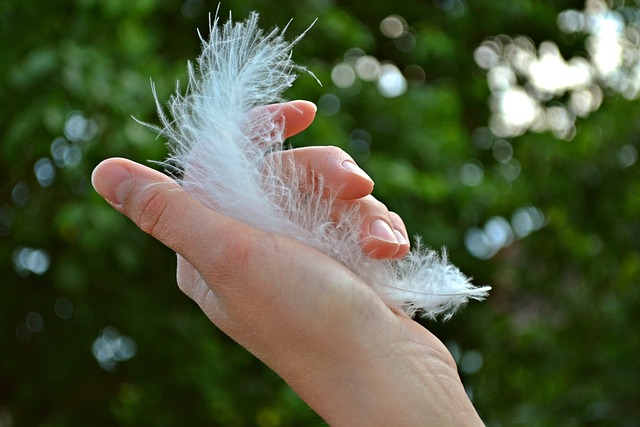Nails can provide insights into your overall health, and certain changes or abnormalities in the nails may indicate underlying health conditions. While nail changes alone are not definitive diagnostic tools, they can serve as signals for further investigation. Here are some potential signs and what they might indicate:
- Yellowing of Nails: Yellow nails can be a sign of fungal infection, but they may also indicate respiratory conditions, such as chronic bronchitis.
- White Spots: Small white spots on the nails, known as leukonychia, are usually harmless and often caused by minor trauma. However, persistent white spots might be indicative of a fungal infection.
- Brittle Nails: Brittle or easily breakable nails may result from frequent exposure to water, harsh chemicals, or nutritional deficiencies, such as low levels of iron or biotin.
- Clubbing: Enlarged fingertips and curved nails, known as clubbing, may be associated with lung or heart conditions that reduce the amount of oxygen in the blood.
- Pitting: Small dents or depressions in the nails, known as pitting, can be seen in conditions like psoriasis or other autoimmune disorders.
- Beau's Lines: Horizontal depressions or ridges across the nail, called Beau's lines, may indicate severe illness, trauma, or systemic diseases that affect nail growth.
- Changes in Color: Changes in nail color, such as brown or black streaks, may be indicative of melanoma or other forms of skin cancer. A healthcare professional should evaluate any sudden changes.
- Spoon Nails (Koilonychia): Nails that curve upward at the edges, creating a concave shape, may be associated with iron deficiency anemia.
- White Lines or Stripes (Muehrcke's Lines): White lines that run parallel to the lunula (the white, crescent-shaped area at the base of the nail) may indicate hypoalbuminemia, which can be associated with liver or kidney disease.
- Red or Brown Streaks Under the Nails: Small red or brown streaks under the nails, known as splinter hemorrhages, can be associated with a variety of conditions, including endocarditis or psoriasis.
- Changes in Nail Shape: Changes in the overall shape of the nails may be associated with conditions affecting the lungs, heart, or liver.
It's important to note that many nail changes are benign and can be caused by factors like trauma or aging. However, persistent or severe changes warrant medical attention. If you notice any unusual changes in your nails, it's advisable to consult with a healthcare professional or a dermatologist for a thorough evaluation and appropriate diagnosis.

Nails play several important roles in the human body, despite being a relatively small and seemingly insignificant part. Here are some key functions of nails:
- Protection: Nails serve as protective coverings for the fingertips and toes. The hard surface of the nails helps protect the sensitive tips of the fingers and toes from injuries, impacts, and external trauma.
- Sensitivity and Touch: The nail bed, located beneath the nail, contains a high concentration of nerve endings. This makes the fingertips and toes highly sensitive to touch and pressure, allowing us to interact with the environment more effectively.
- Grip and Manipulation: Nails enhance our ability to grasp and manipulate objects. The firm and curved structure of the nails provides an effective surface for holding and manipulating small items.
- Scratching and Defense: Nails are useful for scratching, which can provide relief from itching or remove debris from the skin. In the animal kingdom, claws and nails also play a defensive role.
- Support for Fingertips: Nails contribute to the structural support of the fingertips, helping to maintain their shape and integrity.
- Cosmetic and Cultural Significance: Nails have cultural and cosmetic significance in many societies. Manicures and nail art are common practices, and the appearance of nails can be an indicator of personal grooming and hygiene.
- Indicator of Health: Changes in the appearance of nails can sometimes indicate underlying health conditions. For example, discoloration, ridges, or abnormalities in the nails may be signs of nutritional deficiencies, infections, or systemic diseases.
- Temperature Regulation: Nails can act as thermal insulators, helping to regulate the temperature of the fingertips and toes. This can be especially important in cold environments.
- Indicator of Aging: Like hair, the condition of nails can change with age. The growth rate may slow, and nails may become more brittle. Changes in nail health can sometimes be reflective of overall aging and health.
While nails serve these important functions, it's also crucial to note that nail health can be influenced by various factors, including diet, hydration, and overall health. Taking care of your nails involves maintaining good hygiene, protecting them from trauma, and addressing any changes or abnormalities promptly. If you have concerns about the health of your nails, consulting with a healthcare professional or a dermatologist is advisable for proper evaluation and guidance.
News, Health, Travel & Entertainment Telegram Channel Click to Join Infimor
